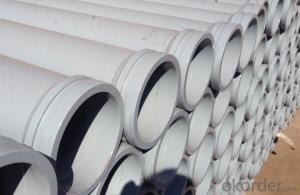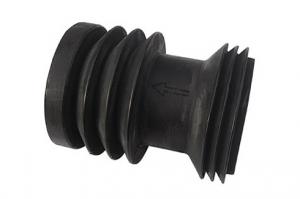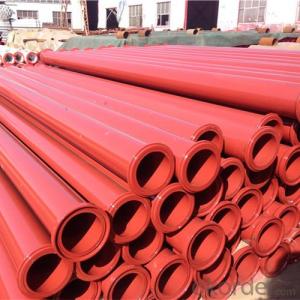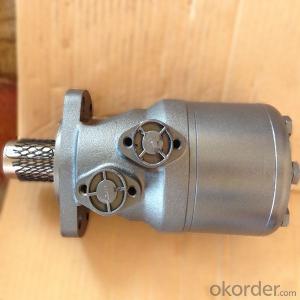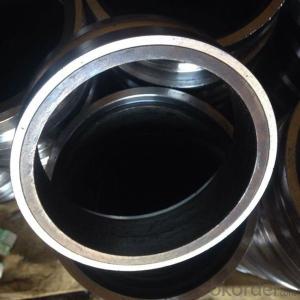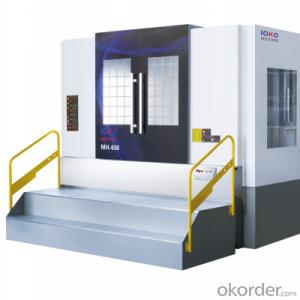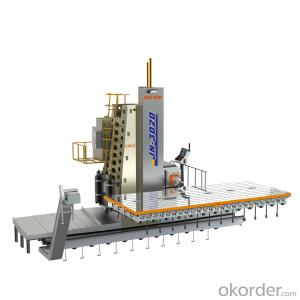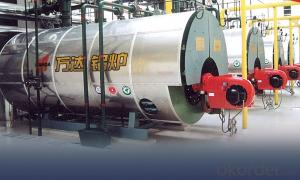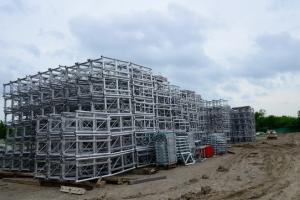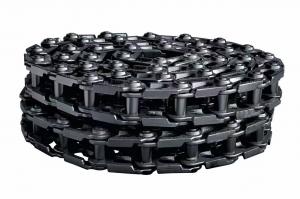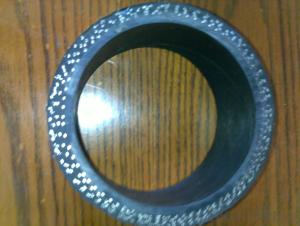Concrete Pump Truck Parts Delivery Pipe ZX HD DN125 3MTR Thick 7.1MM
- Loading Port:
- China main port
- Payment Terms:
- TT OR LC
- Min Order Qty:
- 100 pc
- Supply Capability:
- 10000 pc/month
OKorder Service Pledge
OKorder Financial Service
You Might Also Like
Product Description:
Widely used on concrete pump truck, concrete placing boom, trailer concrete pump etc, for concrete delivery pipe connection.
Our concrete pump pipes have been successfully exported to many countries from 1998, Our main markets as below: Middle East, Southeast Asia, America, Brazil, Italy, Russia, South Africa etc
Main Product Features:
1. Mainly adopt carbon steel high wear resistant steel, and other material upon your request.
2. Hydraulic tester & artificial detection.
3. Possess quality certification of ISO 9001:2000. Can pass CE test.
4. A wide range of specifications for you.
5. We can supply OEM service and can also produce according to your requirements.
6. Total series of concrete pump pipes for different brand concrete pump(PUTZMEISTER, SCHWING, CIFA, SANY, ZOOMLION, IHI, KYOKUTO Etc) available from us.
Product Specifications:
Dimension: DN125
Length: 3m
Thickness: 7.1mm
Material: ST52
Characteristics: double-ends flange
Package: Seaworthy packing or as customers’ request.
FAQ:
Q1: How to confirm that your pipes could be used in our pump?
A1: We have been providing parts for nearly ten years, and cooperating with the agent of the world famous brand, possess near every kind of pipe in the market. What is more, we can produce as the customers’ request with drawing provided.
Q2: How do we guarantee the quality of our products?
A2: We have established an advanced quality management system which conducts strict quality tests at every step, from raw materials to the final product.
Q3: How soon can we receive the product after purchase?
A3: Within three days of placing an order, we will begin production. The specific shipping date is dependent upon international and government factors, but is typically 5-15 workdays.
Q4: If we can produce some Concrete Pump Truck Parts according to customers request?
A4: Yes, we can produce Concrete Pump Truck Parts according to the difference country situations to make it suitable to the market and customers. We have very professional technical team to make the design.
Q5: How to make a quick resolution for after service?
A5: OKorder and our manufacture both have overseas branches all-around of world, IF needed, the seller shall dispatch 2 engineers to the buyer's site for supervision of training. The buyer shall make available of necessary facilities & skilled personnel at site for training.
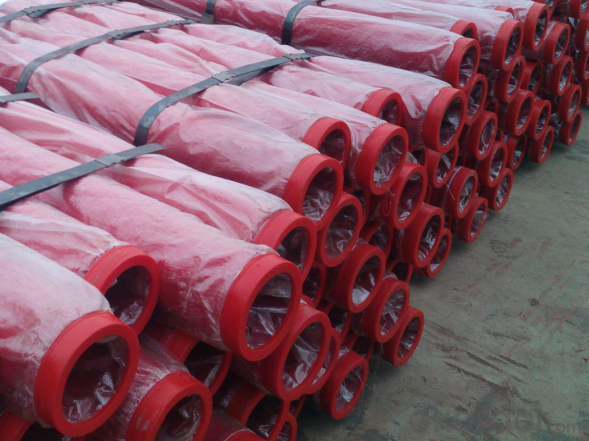


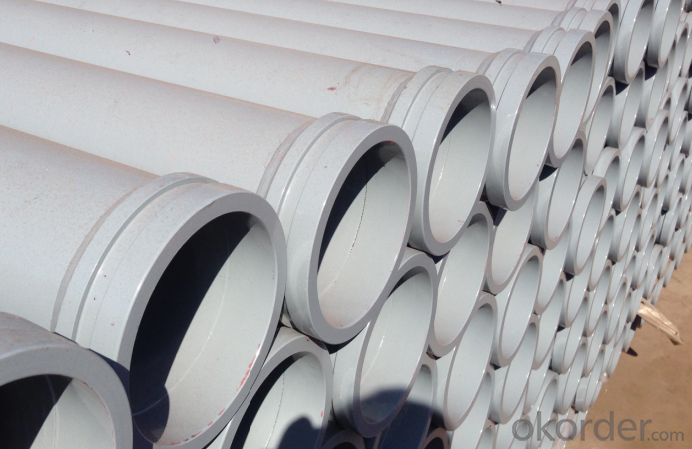
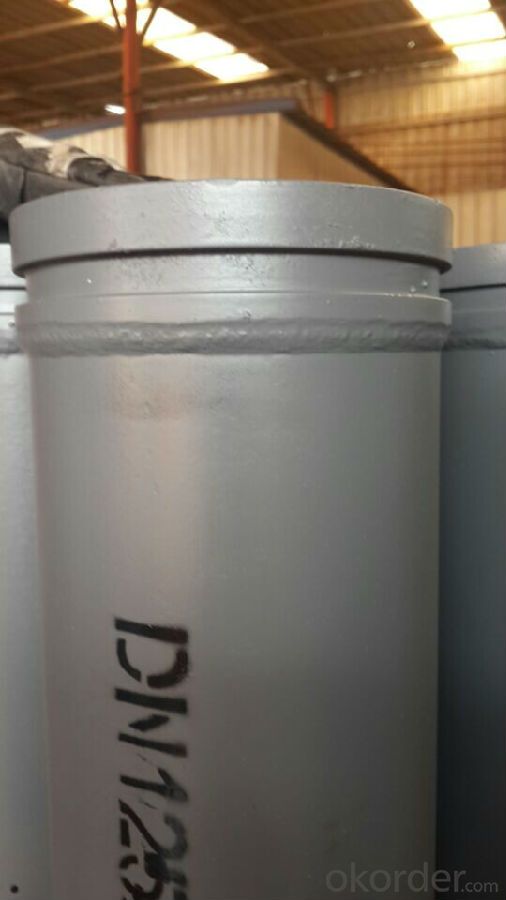
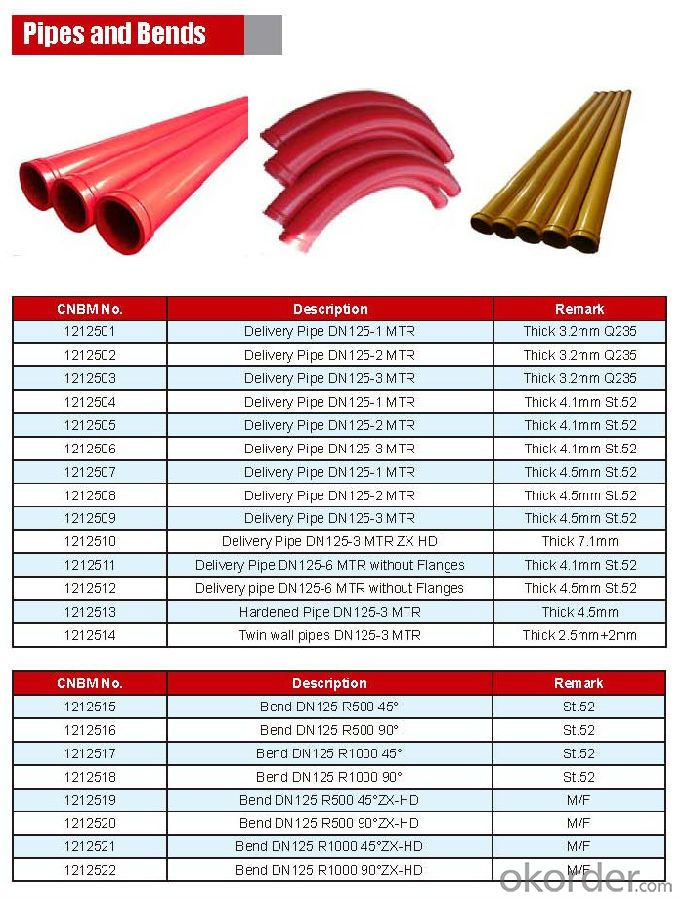
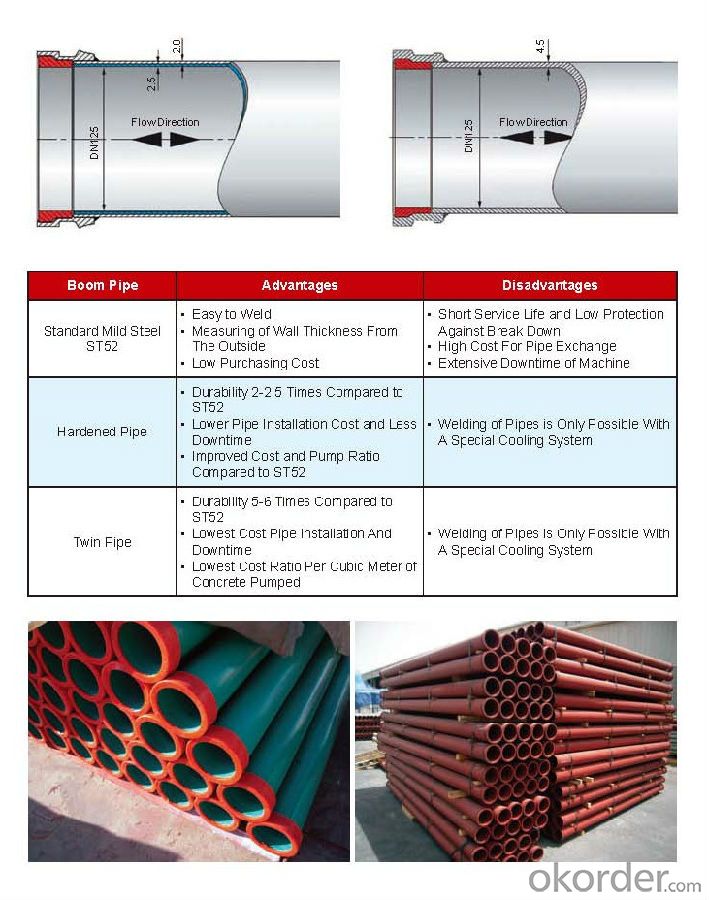
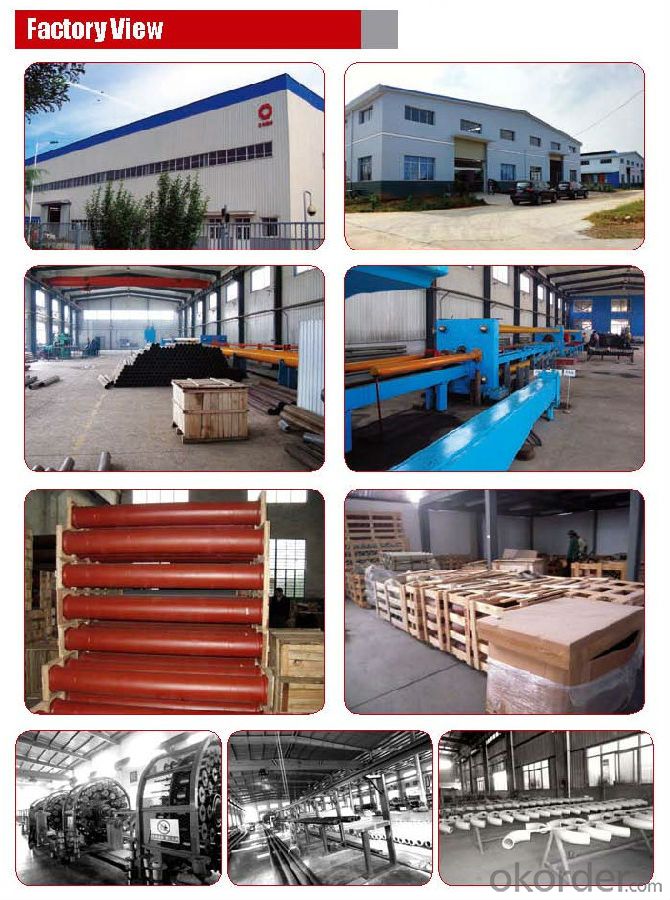
Other Products :
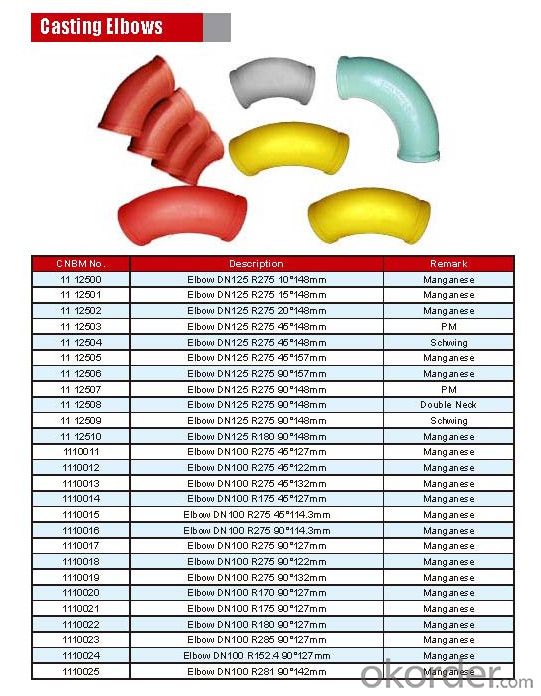

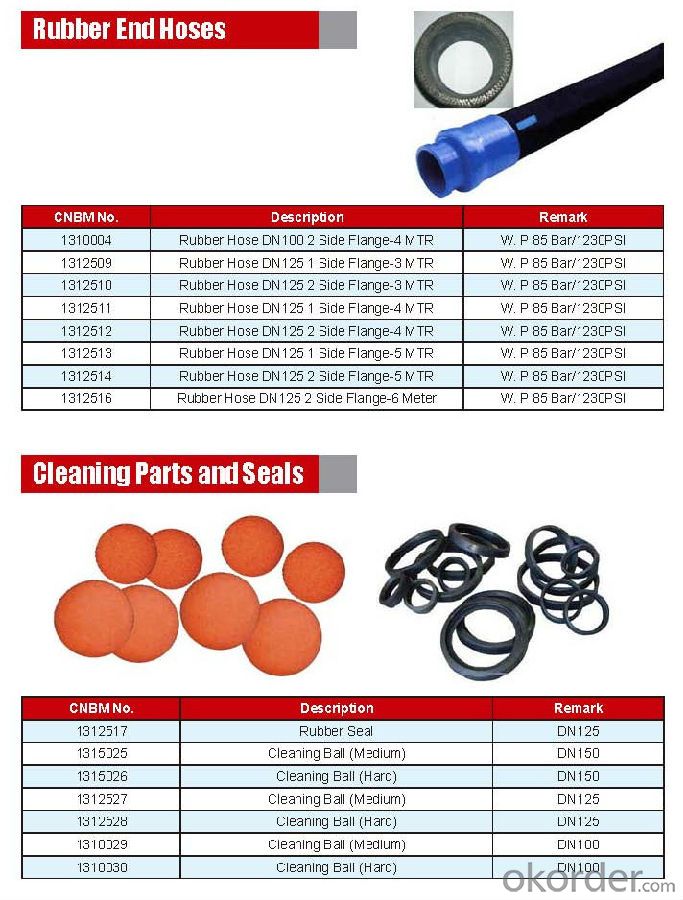
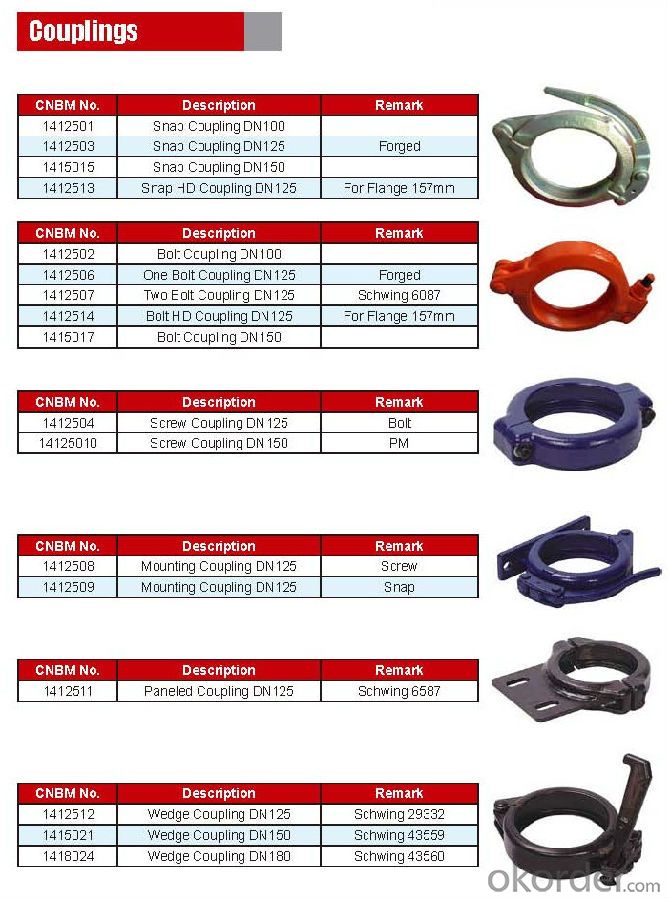
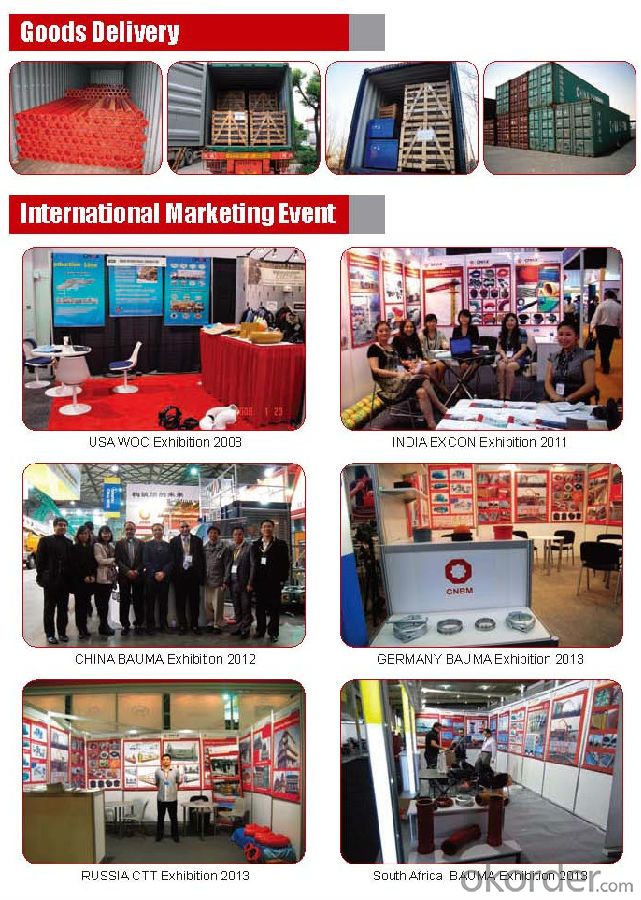
- Q:How often should concrete pump S valves be inspected and replaced?
- Concrete pump S valves should be inspected regularly, ideally every 500 hours of operation or at least once a year. However, the replacement of S valves will depend on various factors such as the quality of the concrete being pumped, the frequency of use, and the overall condition of the valve. It is recommended to consult the manufacturer's guidelines and seek professional advice to determine the specific timing of S valve replacement.
- Q:What is the purpose of a concrete pump hopper grate?
- The purpose of a concrete pump hopper grate is to filter out any large debris or aggregates from the concrete mixture as it is being pumped into the hopper. It helps to ensure a smooth and consistent flow of concrete, preventing any blockages or clogs in the pump system.
- Q:What are the indications of a worn-out concrete pump clamp?
- There are several indications that a concrete pump clamp may be worn out and in need of replacement. Some common indications include: 1. Leaking: If you notice any leaking around the clamp area while the concrete pump is in operation, it could be a sign of a worn-out clamp. This leaking could be due to a faulty seal or gasket, which may no longer be able to create a tight and secure connection between the pump and the hose. 2. Vibrations and rattling: A worn-out clamp can cause excessive vibrations and rattling during the pumping process. This could be due to the clamp no longer being able to hold the hose firmly in place, leading to movement and instability. 3. Difficulty in tightening: If you find that it is increasingly difficult to tighten the clamp properly, it may indicate that the clamp is worn-out. Over time, the clamp's components can become worn, making it harder to achieve a secure and tight connection. 4. Visual signs of damage: Inspect the clamp for any visual signs of damage, such as cracks, dents, or corrosion. These physical damages can compromise the clamp's ability to function effectively, leading to potential leaks or instability. 5. Excessive wear and tear: If you have been using the same concrete pump clamp for an extended period without replacement, it is advisable to inspect it regularly for signs of excessive wear and tear. This could include worn-out or missing bolts, a deformed clamp body, or any other visible signs of deterioration. It is essential to address any indications of a worn-out concrete pump clamp promptly to ensure the safety and efficiency of the pumping operations. If you observe any of these signs, it is recommended to consult a professional or replace the clamp to avoid potential accidents or disruptions in the concrete pumping process.
- Q:How long do concrete pump hoses typically last?
- Concrete pump hoses typically last between 5 to 10 years, depending on various factors such as usage, maintenance, and the quality of the hose itself. Regular wear and tear, exposure to harsh chemicals, and extreme weather conditions can all contribute to the deterioration of the hose over time. Proper maintenance, including regular cleaning, inspection, and replacement of worn-out parts, can help extend the lifespan of the hose. However, it is important to note that regular monitoring and replacement of hoses are necessary to ensure the safety and efficiency of the concrete pumping process.
- Q:Are there any warranties or guarantees available for concrete pump spare parts?
- Yes, there are warranties and guarantees available for concrete pump spare parts. Many reputable manufacturers and suppliers offer warranties on their products, providing assurance of quality and performance. These warranties typically cover defects in materials or workmanship and may vary in duration and terms. It is advisable to inquire about the specific warranty or guarantee offered by the supplier before purchasing concrete pump spare parts.
- Q:What are the advantages of using ceramic components in concrete pump spare parts?
- There are several advantages of using ceramic components in concrete pump spare parts. Firstly, ceramic materials are known for their exceptional hardness and wear resistance, making them highly durable and long-lasting. This means that ceramic components in concrete pump spare parts will withstand the abrasive nature of concrete and other materials, reducing the frequency of replacements and increasing the overall lifespan of the equipment. Secondly, ceramic components offer excellent corrosion resistance, especially when compared to traditional metal parts. This is particularly important in the concrete pumping industry, as concrete contains various chemicals and substances that can cause corrosion in metal components over time. By using ceramic parts, the risk of corrosion and subsequent equipment failure is significantly reduced, leading to lower maintenance costs and improved operational efficiency. Additionally, ceramic components have excellent thermal and electrical insulation properties. This means that they can withstand high temperatures without deforming or losing their structural integrity. In concrete pumping applications, where high temperatures can be generated due to friction and pressure, using ceramic parts ensures the equipment's reliability and performance. Lastly, ceramic components are known for their lightweight nature. Compared to metal parts, ceramic components are lighter, contributing to overall weight reduction of the equipment. This not only makes it easier to transport and handle the spare parts but also reduces the strain on the equipment, ultimately improving its efficiency and reducing energy consumption. Overall, the advantages of using ceramic components in concrete pump spare parts include superior hardness, wear resistance, corrosion resistance, thermal and electrical insulation, and lightweight properties. These benefits contribute to longer equipment lifespan, reduced maintenance costs, improved reliability, and enhanced operational efficiency in the concrete pumping industry.
- Q:Are there any environmental considerations in the production of concrete pump spare parts?
- Yes, there are several environmental considerations in the production of concrete pump spare parts. Firstly, the manufacturing process of these parts typically involves the use of various materials and chemicals that can have negative environmental impacts. For example, the production of steel components may require the extraction of iron ore and the emission of greenhouse gases during the smelting process. Similarly, the production of rubber parts may involve the use of petroleum-based materials, which contribute to carbon emissions and pollution. Furthermore, the disposal of concrete pump spare parts after their useful life can also pose environmental challenges. If not properly managed, these parts can end up in landfills, contributing to waste accumulation and potential soil and water contamination. Therefore, it is important to consider the recyclability and reusability of these spare parts during their design and production stages. To address these environmental concerns, manufacturers can adopt sustainable practices in the production of concrete pump spare parts. This may involve incorporating recycled materials into the manufacturing process, such as using recycled steel or rubber. Additionally, manufacturers can implement efficient production techniques to minimize waste generation and reduce energy consumption. Proper waste management and recycling programs should also be established to ensure the responsible disposal of these spare parts at the end of their life cycle. Overall, by considering the environmental impacts associated with the production and disposal of concrete pump spare parts, manufacturers can contribute to a more sustainable and environmentally friendly industry.
- Q:How do I maintain the performance of concrete pump spare parts in extreme weather conditions?
- To maintain the performance of concrete pump spare parts in extreme weather conditions, it is crucial to take certain precautions. Firstly, ensure that the spare parts are properly protected from direct exposure to harsh weather elements such as rain, snow, or extreme heat. This can be achieved by using covers or shelters to shield the parts. Additionally, regular cleaning and lubrication of the spare parts will help to prevent any buildup of dust, dirt, or moisture that could potentially affect their performance. Lastly, conducting regular inspections and maintenance checks will allow for early detection of any damage or wear, enabling timely repairs or replacements to be made, thus ensuring optimal performance in extreme weather conditions.
- Q:How does a concrete pump clamp work?
- A concrete pump clamp is an essential component of a concrete pump that is used to secure and hold the concrete delivery pipeline in place. It works by tightly gripping the pipeline to prevent any movement or leaks during the concrete pumping process. Typically, a concrete pump clamp consists of two main parts: the clamp body and the wedge. The clamp body is usually made of durable steel and has a curved shape that is designed to fit around the pipeline. It is equipped with bolts or knobs that can be tightened or loosened to secure the clamp onto the pipeline. The wedge, on the other hand, is a piece of metal that is inserted into the clamp body. It is responsible for exerting pressure onto the pipeline when the clamp is tightened. By turning the bolts or knobs, the wedge is pushed further into the clamp body, causing it to squeeze the pipeline tightly and create a firm grip. The tight grip created by the concrete pump clamp is crucial as it ensures that there are no leaks or disruptions in the concrete flow. It helps to maintain a consistent and steady flow of concrete from the pump to the desired location. Additionally, the clamp also provides stability to the pipeline, preventing it from moving or shifting during the pumping process. Overall, a concrete pump clamp plays a vital role in the efficient and safe operation of a concrete pump. It ensures that the concrete delivery pipeline remains securely in place, allowing for a smooth and uninterrupted concrete pumping process.
- Q:How often should concrete pump hydraulic filters be inspected and replaced?
- Concrete pump hydraulic filters should be inspected and replaced on a regular basis, ideally every 500 hours of operation or according to the manufacturer's recommendations. Regular inspection and replacement of hydraulic filters help ensure the proper functioning and longevity of the concrete pump.
1. Manufacturer Overview |
|
|---|---|
| Location | |
| Year Established | |
| Annual Output Value | |
| Main Markets | |
| Company Certifications | |
2. Manufacturer Certificates |
|
|---|---|
| a) Certification Name | |
| Range | |
| Reference | |
| Validity Period | |
3. Manufacturer Capability |
|
|---|---|
| a)Trade Capacity | |
| Nearest Port | |
| Export Percentage | |
| No.of Employees in Trade Department | |
| Language Spoken: | |
| b)Factory Information | |
| Factory Size: | |
| No. of Production Lines | |
| Contract Manufacturing | |
| Product Price Range | |
Send your message to us
Concrete Pump Truck Parts Delivery Pipe ZX HD DN125 3MTR Thick 7.1MM
- Loading Port:
- China main port
- Payment Terms:
- TT OR LC
- Min Order Qty:
- 100 pc
- Supply Capability:
- 10000 pc/month
OKorder Service Pledge
OKorder Financial Service
Similar products
New products
Hot products
Hot Searches
Related keywords

